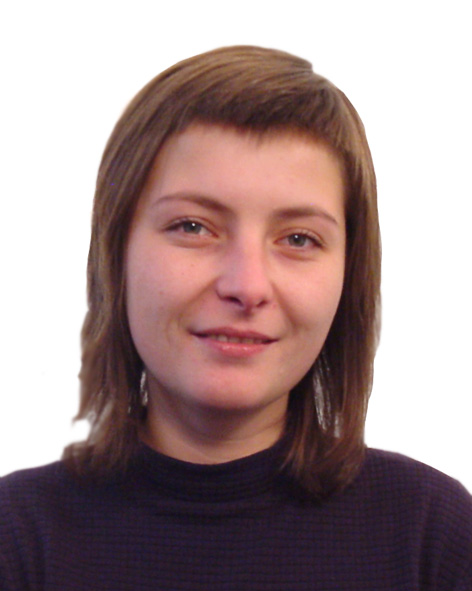Dobrina Boltcheva

|
|
Welcome to my professional web page!
Currently, I am post-doc in Computer Graphics at INRIA-Alpes.
My research position is within the EVASION team of the Laboratoire Jean Kuntzmann, which is a joint unit of the Grenoble universities, CNRS and INRIA.
Research
My research interests include Geometric Modelling and Computational Topology .
I joined the EVASION team at INRIA Rhône-Alpes in Novembre 2009 in order to work on
computing homology groups with nice generators from non-manifold simplicial complexes within the projet IDEAL.
Since September 2010, I am also involved in the ARC projet PlantScans3D and I am working on reconstructing and modelling of plants from 3D scanner point clouds.
Publications
Publications with EVASION in INRIA-Rhône-AlpesPublications with GEOMETRICA in INRIA-Sophia Antipolis
Publications with IGG in LSIIT-University of Strasbourg
Projects
PlantScan3D : Reconstruction and Modelling

Partners: Virtual Plants (INRIA and CIRAD Montpellier) and GALAAD (INRIA Sophia-Antipolis), DAP (Montpellier), LEPSE (Montpellier), URP3F (Lusignan), PIAF (Clermont-Ferrand), Univ. Helsinki (Finland), Centre for Forestry and Climate Change (Farnham, UK).
National project, funded by Agropolis Fondation and INRIA (ARC).
The aim of this project is to promote the use of laser scanners for plant geometry reconstruction, in partnership with biologists-agronomists from several teams in France and Europe.
Automatic acquisition of plant phenotypes, and in particular of plant architecture phenotypes, constitutes a major bottleneck in the construction of quantitative models of plant development. This issue needs to be addressed now to bridge the gap toward predictive agronomic applications, in particular to build and assess accurate virtual plant models. Most of actual measurement methodologies are manual and extremely time consuming which is a major issue.
Recently, 3D Laser Scanners (SL3D) have made it possible to acquire 3D images on which each pixel has an associated depth corresponding to distance between camera and the pinpointed surface of the object. The raw output is the set of spatial coordinates (x,y,z) of points seen by the laser at the surface of the target object. However, a plant is usually a set of discontinuous surfaces fuzzily distributed in a volume of vegetation. Lots of occlusions between organs occur. Smallest organs may be described with a very small density of points adding some fuzziness to the acquisition. This is why classical geometrical reconstruction fails for this particular type of irregular geometry.
IDEAL : Computational Topology

Partners: G-SCOP (Grenoble) and DISI (Genova, Italy).
Local project, funded by Grenoble INP (BQR).
Co-workers: Sara Merino Aceituno (Master student), Jean-Claude Léon (professor, Univ. Grenoble), Franck Hétroy (MCF INP-Grenoble), Leila De Floriani (professor, Univ. Genova), David Canino (PhD student, Univ.Genova), Francis Sergeraert (professor, Institut Fourier)
The main goal of this project is to study non-manifold geometric models and to find out features allowing to classify these models and criteria for determining their shape. We are interested in non-manifold models such as "idealized" industrial CAD models which are frequently used in computer graphics and many engineering applications even if there are still ill-understood.
This year, we have worked on the computation of topological invariants, such as the homology groups, since they play a crucial role in the field of shape description and analysis. The goal was also to acquire a better understanding of the behaviour of the homological groups on non-manifold models. A first step towards this goal has been achieved this year and we have developed an efficient method for computing the homology of a large simplicial complex from the homologies of its sub-complexes. This work has been already published in a research report [RR'10] and a journal paper is currently under preparation.
Short CV
| Since Nov. 2009 | Post-Doc at INRIA, the EVASION team. | ||
| 2008-2009 | Post-Doc at INRIA, the GEOMETRICA team. | ||
| 2007-2008 | Teaching Computer Science at IUT Robert Schuman as ATER. | ||
| 2003-2007 | Ph.D. in computer science from the
University of Strasbourg,
in the Computer Graphics and Geometry IGG team of the LSIIT Lab.
Thesis (in french): Modélisation géométrique et topologique des images discrètes. [Download] Teaching Computer Science at IUT Robert Schuman as "moniteur" CIES Alsace. |
||
| 1998-2003 | Master in computer science from the
University of Strasbourg.
Thesis (in french): Segmentation anatomique du foie à partir des repères internes et externes. [Download] |
 |
 |
 |
 |